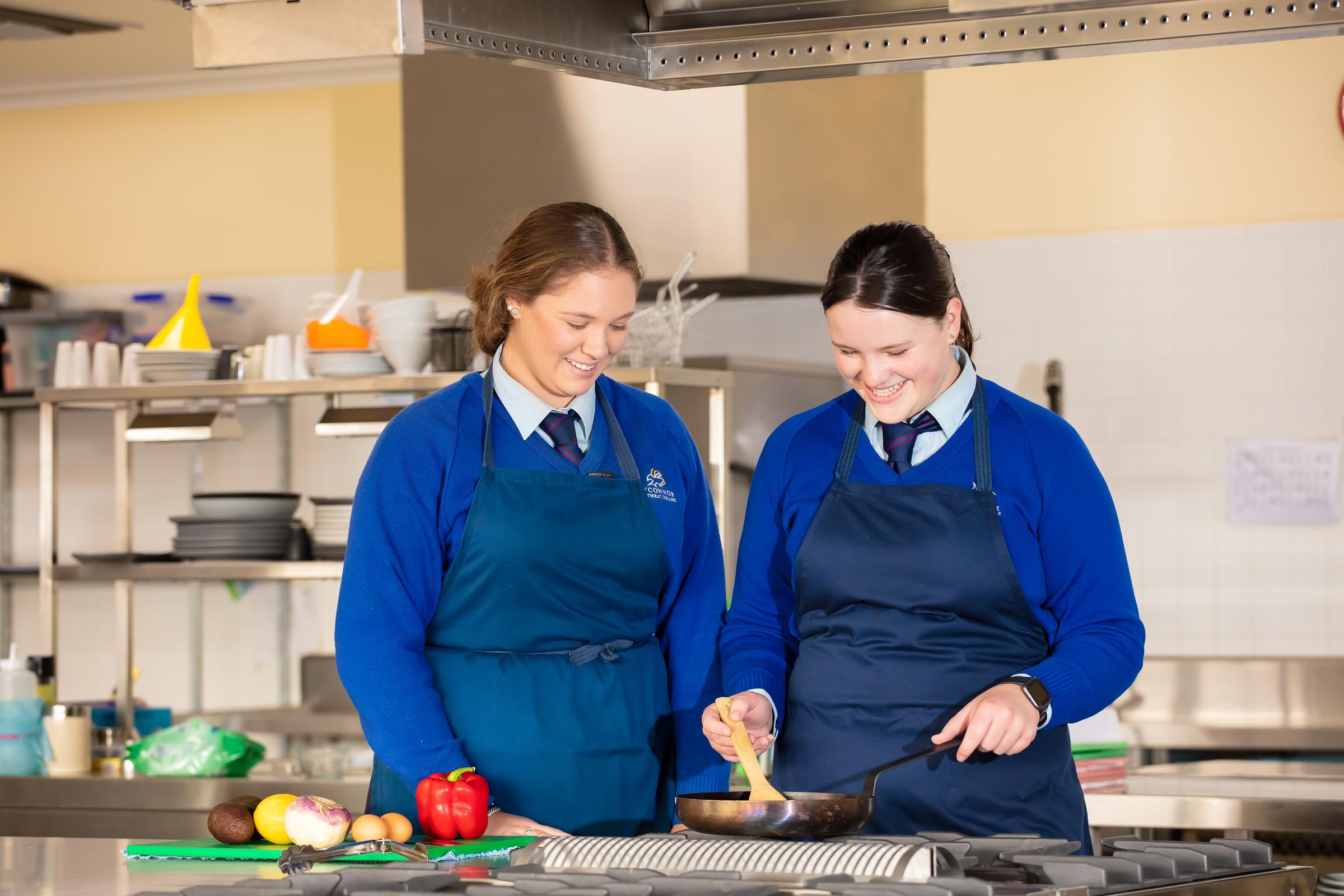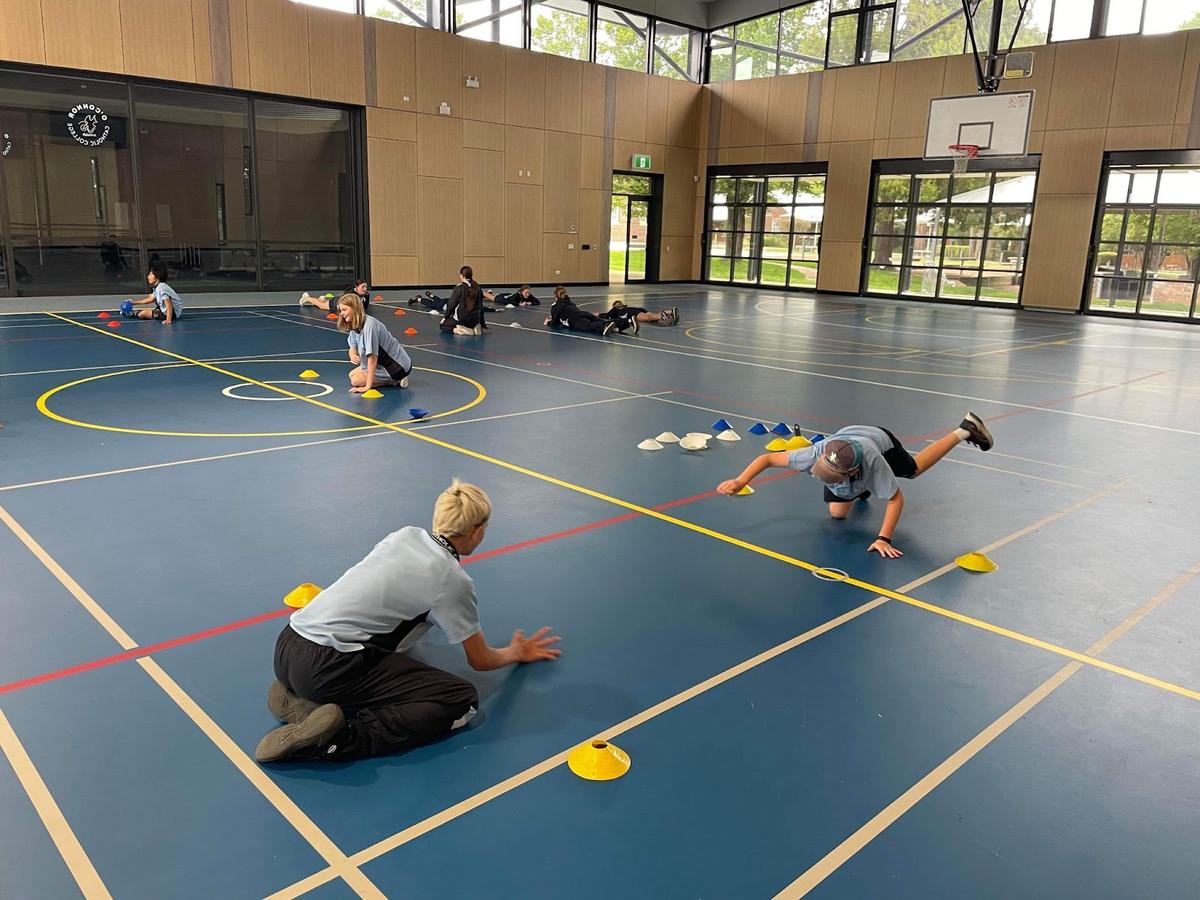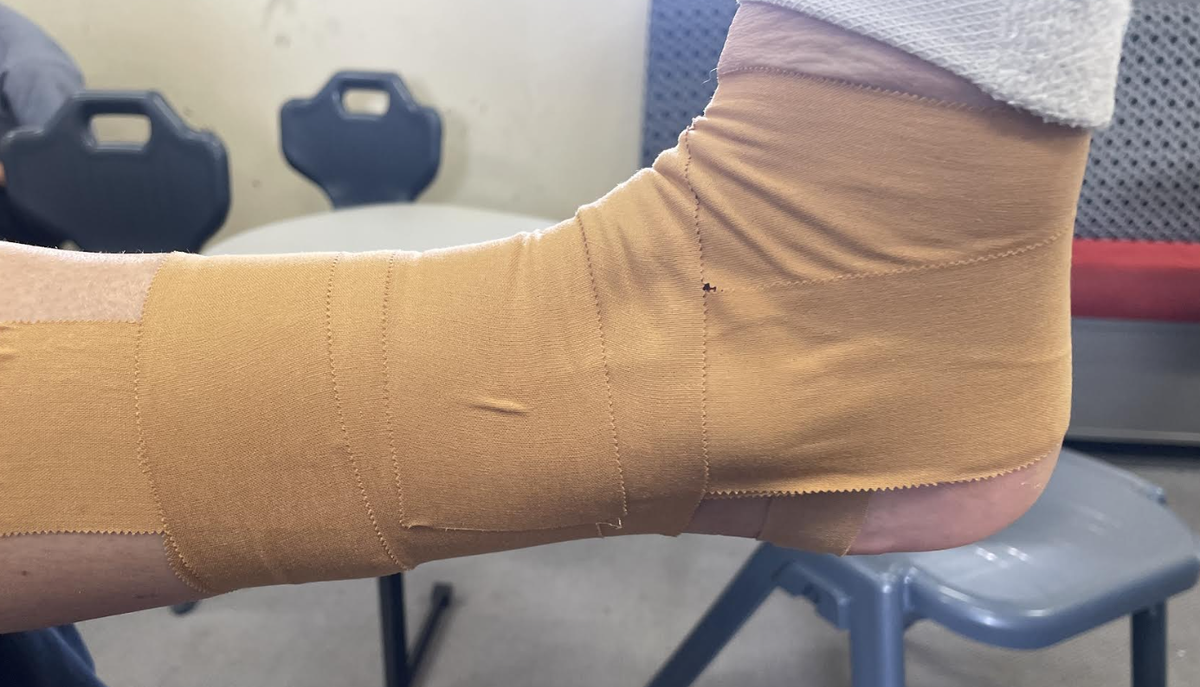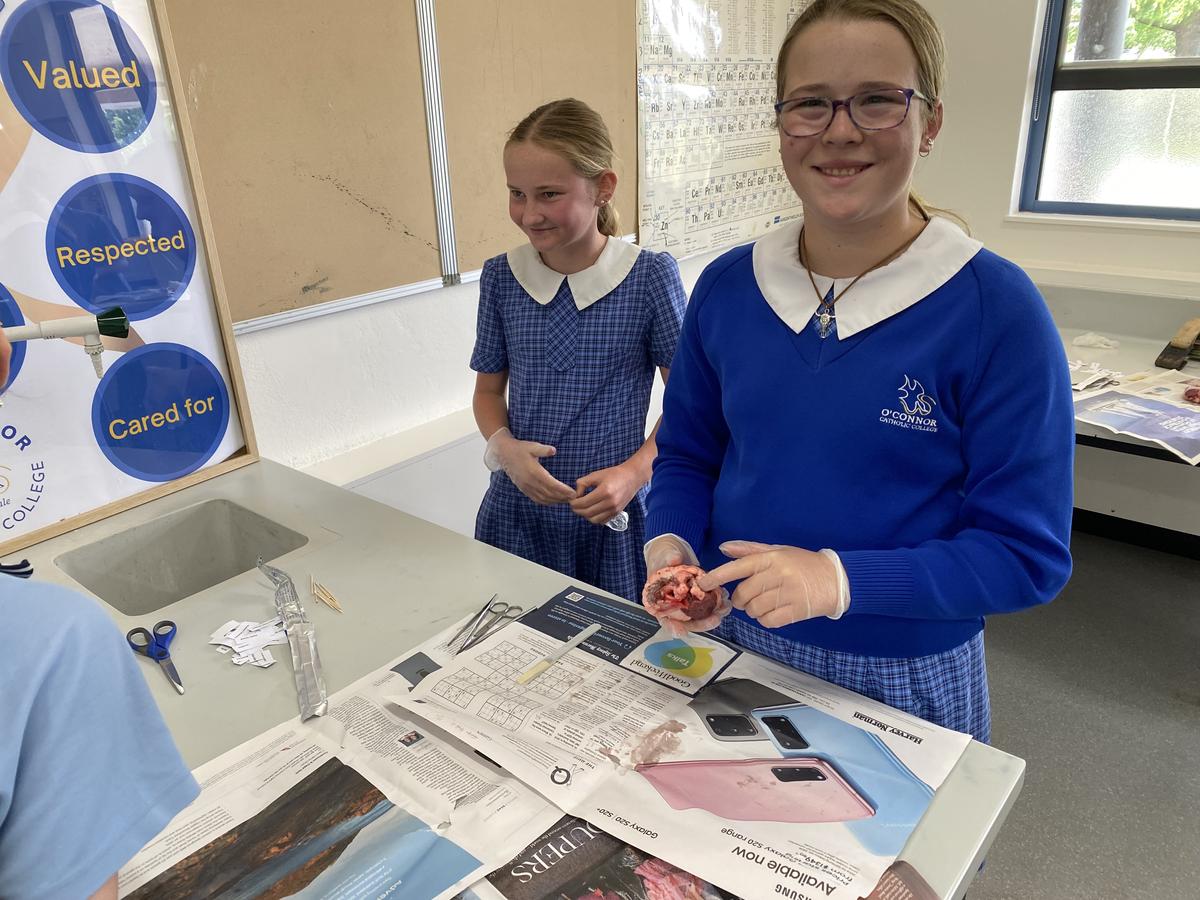KLA News

HSIE
Students have been hard at work for HSIE the past few weeks. Year 7 explored Ancient Egypt for their historical exploration. Year 8 investigated Shogun Japan, including the practice of origami shown below. Year 9 learnt about Human Wellbeing in geography, including sharpening their statistical skills. Year 10 explored the impact humans have on the environment and the various strategies we can follow to be more sustainable. Two Year 8 students wrote a short report to tell us about the art forms in Shogun Japan.
Rap (Year 8)
In this unit, students have learnt what and how the Japanese lived under the shogun. From this topic, Students have studied their ways of the arts such as Kabuki: the art of theatre and storytelling, Calligraphy: the art of writing beautifully, Origami: the art born from folding paper into different shapes, and Bonsai: the artform that has artificially dwarfed trees be grown in pots. Learning this, there was much time dedicated to practising these artforms. Students delicately folded an animal of their choice, acted, drew Japanese symbols, and... did not grow a tree. Due to lack of space and resources, Bonsai were left to be drawn. But all were beautiful either way. From these lessons, Students learnt the significance of these practices to the culture, religions, and life of Feudal Japan.
Travis (Year 8)
In this unit of History we have learnt about Japan under the shogun. One of the many things we have learnt about in this unit is the art of shogunate Japan. The artforms that we have learnt about are kabuki, origami, bonsai and calligraphy.
Kabuki is the art of traditional Japanese theatre involving singing and dancing in a highly stylized manner. Kabuki is recognizable by its particular music, costumes, stage devices and props as well as extreme over-dramatized acting and scenarios.
Origami is the Japanese art of folding paper to transform a flat square of paper into a finished sculpture through folding. Origami is separated into two categories, stylized ceremonial origami, called origata, and recreational origami.
Bonsai is the Japanese art of growing and shaping miniature trees in containers, Bonsai trees have been considered a symbol of peace and harmony or of appreciation and respect. Bonsai also represents the long life and patience of those who carefully nurture them.
Calligraphy is the art of producing decorative lettering written by hand with a pen or brush. The art places an emphasis on beauty and line. The main elements of calligraphy are writing technique, structure, ink use and composition.
Our class has also created some examples of these arts ourselves to better our understanding of the topic.
For the remainder of Term 4, Year 7 will start work on Ancient China, while Year 8 will investigate the Aztecs. Year 9 will continue to focus on life expectancy and other factors impacting wellbeing, and Year 10 will complete their study of environmental management strategies.
PDHPE
Our Personal Development, Health and Physical Education (PDHPE) classes have been busy this term, below is a snapshot of the learning that has occurred both inside (PDH) and out of the classroom (PE) to finish the year!
Year 7 PDHPE
Theory - Risky Business
Prac - Striking Games
Yr 8 PDHPE
Theory - Mind Body, Spirit
Prac - Net and Court Games
As part of our Net and Court Games unit our Year 8 students have been enjoying a wide variety of games and sports including tennis, badminton, paddle bat, basketball, netball, volleyball, boof hockey and slide hockey. Students have also enjoyed a number of hybrid and contemporary court games and are thoroughly enjoying spending time in our new College Gymnasium. Pictured below are Miss Fryar’s Year 8 PDHPE class playing a variation of ‘Air Hockey’
Year 9 PDHPE
Theory - First Aid
Prac - Contemporary Games
Year 9 PASS
Lifestyle, Leisure & Recreation
Year 9 Child Studies
Happy and Healthy
Year 10 PDHPE
Theory - The Next Chapter
Prac - Backyard Games & Alternate Sports
Year 10 PASS
Technology in Sport
Year 10 Child Studies
Childcare Services & Career Opportunities
Year 11/12 PDHPE
Option 1 - Sports Medicine
Pictured below are our Year 12 PDHPE students - this week they learnt some basic ankle strapping techniques as we explored various strapping and bandaging techniques for sporting injuries.
Year 11/12 CAFS
Research Methodology
Year 11/12 SLR
Games and Sports Application
CHANGE IT MODEL
Each of our PDHPE lessons are tailored to our student needs. In PDHPE we use the
Change-it Model where each practical activity is modified and adjusted to suit the needs of the student.
CHANGE IT comes from the Australian Sports Commission Playing for Life philosophy.
C: Coaching Style: e.g. Reciprocal/Peer teaching. Varied teaching techniques and practical demonstrations so ALL learners can access the content and skills.
H: How to score/win: e.g. modified point system, scoring space
A: Area: e.g. field size – increase or decrease to cater for all players.
N: Numbers: e.g. increase or decrease team numbers
G: Game Rules: e.g. vary the pass – allow any pass or vary the pass. Include novelty passes, e.g. under a leg
E: Equipment: e.g. use different bats – allow player choice. Use different balls – size, weight, flight speed. Use different heights of tee or a cooperative bowler.
I: Inclusion: e.g. modify equipment and rules to maximise participation. Our new College Gymnasium also has a hearing loop system.
T: Time: e.g. adjust the number of overs/bowls or length of the activity to maximise engagement and participation.
English
The Value of Reading
Reading embodies a multitude of values that extend far beyond the mere act of consuming words on a page. It serves as a gateway to knowledge, fostering intellectual growth and expanding one's understanding of the world. Beyond the acquisition of information, reading cultivates empathy by allowing readers to inhabit the perspectives of diverse characters and cultures. It enhances critical thinking skills, encouraging individuals to analyze, question, and synthesize information. Moreover, reading fuels creativity, inspiring new ideas and imaginative thinking. It serves as a therapeutic escape, providing solace and relaxation in the midst of life's challenges. Beyond its cognitive benefits, reading instills a lifelong love of learning and a curiosity that knows no bounds.
Literature and Christmas
In the lead-up to Christmas many of us struggle to decide what to gift our loved ones that is meaningful and considered. Giving books as Christmas gifts not only adds a touch of literary magic to the holidays but it is also thoughtful. Books have the remarkable ability to transport readers to different worlds, spark imagination, and offer new perspectives. Whether it's a captivating novel, an inspiring graphic novel, or a beautifully illustrated children's book, a carefully chosen book reflects the giver's consideration for the recipient's interests and passions. It's a gift that keeps on giving, providing hours of enjoyment and knowledge long after the holiday festivities have ended. In a world filled with technology and gadgets, the simple act of giving a book embraces the joy of reading and the warmth of sharing stories, making it a meaningful present for any person.
English and The Second Half of Term 4
As we well and truly move into the second half of this term, students in English classes are starting to move towards completing their analytical and creative compositions. This has seen students challenged with writing in different forms and being aware of both the audience and the purpose of their writing. These two ideas are a great way to focus a piece of writing and achieve success, moving their learning forward in this area.
CAPA
On the 23rd of November we will be holding our Showcase night. Join us at 5:30pm for nibblies, catered by the hospitality class, and a wander through the Art, Textiles, Technology and PRAXIS gallery. From 6pm we will
have performances from our Drama and Music students.
TAS
Year 8 Engineering Technology ‘Wind It Up Unit’
Last week Yr 8 engineering students undertook the Paper Straw Tower Challenge as part of the Yr 8 Engineering Technology Unit “Wind It Up”. This basically required them to design and construct a straw water tower that was capable of supporting a tin can on a 100mm square platform a minimum of 300mm above the ground.
For this challenge there were a number of limitations which included their tower:
- being constructed from 50 straws or less and small pieces of masking tape
- not being attached physically to the benchtop
- using small pieces of masking tape to join the straws together
The towers were then destructively tested to determine the most successful design.
The students were then asked to identify where their design failed, using slow motion video footage, and how it could be improved. This required them looking for the straw that broke first.
Group 3 broke the school record with their design supporting 9500ml at water.
Group 4 recorded 4000ml
Group 5 Recorded 6000ml
Group 5 Recorded 6000ml
Over the next few weeks, the students will study mechanics and simple machines, using Lego gears before undertaking the major design challenge of creating a sustainably powered winch. This project will incorporate a wind turbine, mounted on a lego tower connected to a lego gearbox which can then lift a heavy object slowly off the ground. A project where they will need to utilise all aspects of their study of different types of engineering.
Science
As we enter the last half of Term 4, it's with immense pride and excitement that we reflect on the incredible journey of scientific discovery our students have undertaken. From the vast expanse of the cosmos to the intricacies of the human body, the halls of O’Connor have been buzzing with curiosity and exploration.
Year 7: Journey Through the Solar System
Our Year 7 students embarked on an awe-inspiring expedition through the solar system. From the fiery intensity of the sun to the mysterious depths of outer space, they have delved into the wonders of our celestial neighborhood, gaining a profound understanding of the planets, moons, and the cosmic dance that shapes our universe.
Year 8: Body Systems Unveiled
Year 8 students have been immersed in the intricacies of the human body. The exploration of body systems reached its pinnacle with hands-on learning through heart dissections. Witnessing the beating heart up close has undoubtedly left an indelible mark on their scientific journey.
Year 9: Unlocking the Mysteries of the Universe
In Year 9, our students set their sights beyond the familiar confines of our solar system and contemplated the vastness of the universe. From the birth of stars to the cosmic ballet of galaxies, they have pondered the profound mysteries that surround us, expanding their minds with each lesson.
Year 10: Taking Action on Climate Change
Year 10 students dived into the urgent and relevant realm of climate change. Their exploration culminated in independent research projects that showcased not only their understanding of the science behind climate change but also their innovative ideas for addressing this global challenge. Their commitment to sustainability and scientific inquiry is truly commendable.
Year 11: HSC Course in Full Swing
For our Year 11 cohort, the journey has just begun. Amidst assessments and challenges, they are laying the groundwork for their Higher School Certificate (HSC) course. Their dedication and hard work are evident as they navigate the complex and enriching curriculum ahead.
As we wrap up this term, we express our gratitude to the students for their enthusiasm, the parents for their continuous support, and our dedicated educators for fostering a love of science that goes beyond the classroom. We look forward to the upcoming year with anticipation, as our students continue to push the boundaries of scientific knowledge.
Wishing everyone a restful break and a joyous holiday season!
Maths
Things have been extremely busy this term in the Mathematics faculty. Our new Year 12’s, the class of 2024, have commenced their Higher School Certificate (HSC) coursework, and their application thus far has been commendable. We're excited to see their effort and growth each day.
Currently, all our students are in the midst of their end-of-year in-class mathematics assessments. We commend their effort in these assessments, which play a vital role in shaping their understanding of mathematical concepts and preparing them for the rigors of their academic pursuits in the coming academic year.
Throughout this term our Mathematics faculty staff have been engaged in professional learning and planning for the introduction of the new 7-10 Mathematics syllabus in Year 7 and 9 in 2024. We have been working together designing tasks and sharing innovative ideas and practical strategies that emphasise hands-on learning, fostering essential skills that directly apply to the real world. These initiatives aim to empower students with skills in critical thinking and practical application of important concepts used in everyday life.
Research indicates that Australian students, on average, face challenges in effectively solving complex problems, highlighting a gap in problem-solving skills among the student population. However, problem-solving is a skill that everyone can develop. Whether it's in the realm of mathematics or in daily life, the ability to address challenges, think critically, and find solutions is a capacity inherent in all individuals.
This learning starts at home and continues throughout one's life! With practice and exposure to various problems, anyone can enhance their problem-solving skills. Keep striving to be the best you can be.


















